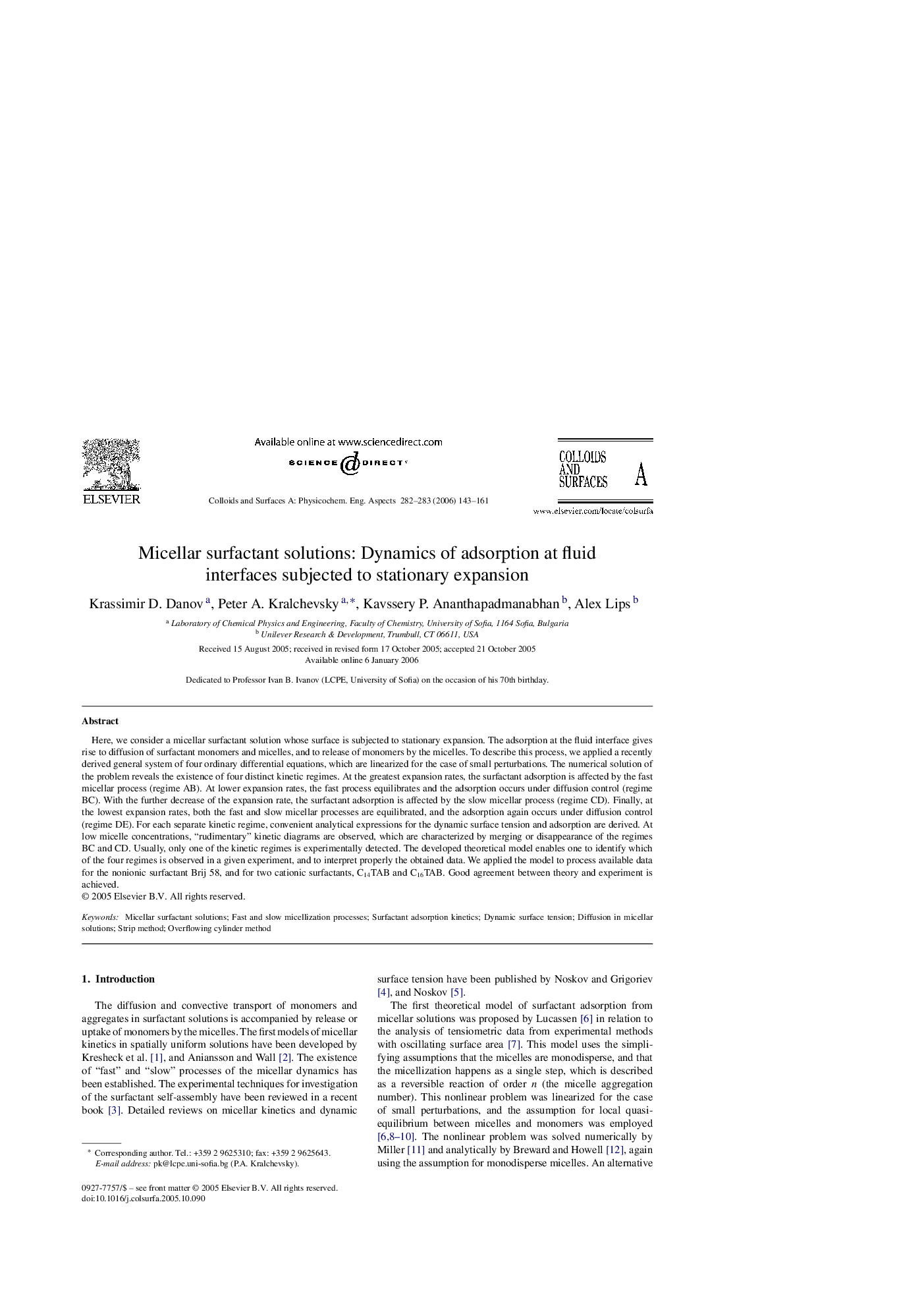| Article ID | Journal | Published Year | Pages | File Type |
|---|---|---|---|---|
| 598383 | Colloids and Surfaces A: Physicochemical and Engineering Aspects | 2006 | 19 Pages |
Here, we consider a micellar surfactant solution whose surface is subjected to stationary expansion. The adsorption at the fluid interface gives rise to diffusion of surfactant monomers and micelles, and to release of monomers by the micelles. To describe this process, we applied a recently derived general system of four ordinary differential equations, which are linearized for the case of small perturbations. The numerical solution of the problem reveals the existence of four distinct kinetic regimes. At the greatest expansion rates, the surfactant adsorption is affected by the fast micellar process (regime AB). At lower expansion rates, the fast process equilibrates and the adsorption occurs under diffusion control (regime BC). With the further decrease of the expansion rate, the surfactant adsorption is affected by the slow micellar process (regime CD). Finally, at the lowest expansion rates, both the fast and slow micellar processes are equilibrated, and the adsorption again occurs under diffusion control (regime DE). For each separate kinetic regime, convenient analytical expressions for the dynamic surface tension and adsorption are derived. At low micelle concentrations, “rudimentary” kinetic diagrams are observed, which are characterized by merging or disappearance of the regimes BC and CD. Usually, only one of the kinetic regimes is experimentally detected. The developed theoretical model enables one to identify which of the four regimes is observed in a given experiment, and to interpret properly the obtained data. We applied the model to process available data for the nonionic surfactant Brij 58, and for two cationic surfactants, C14TAB and C16TAB. Good agreement between theory and experiment is achieved.
